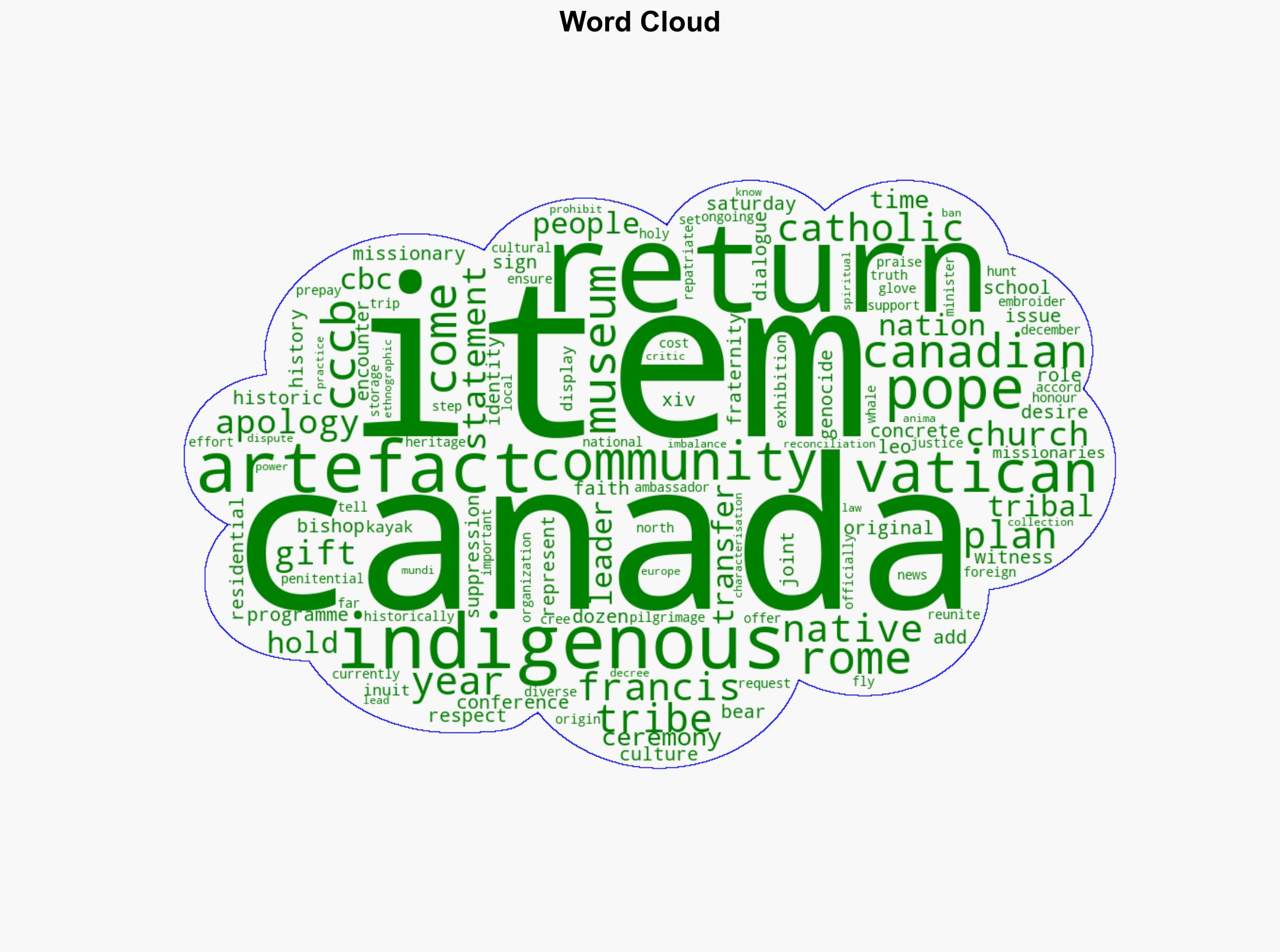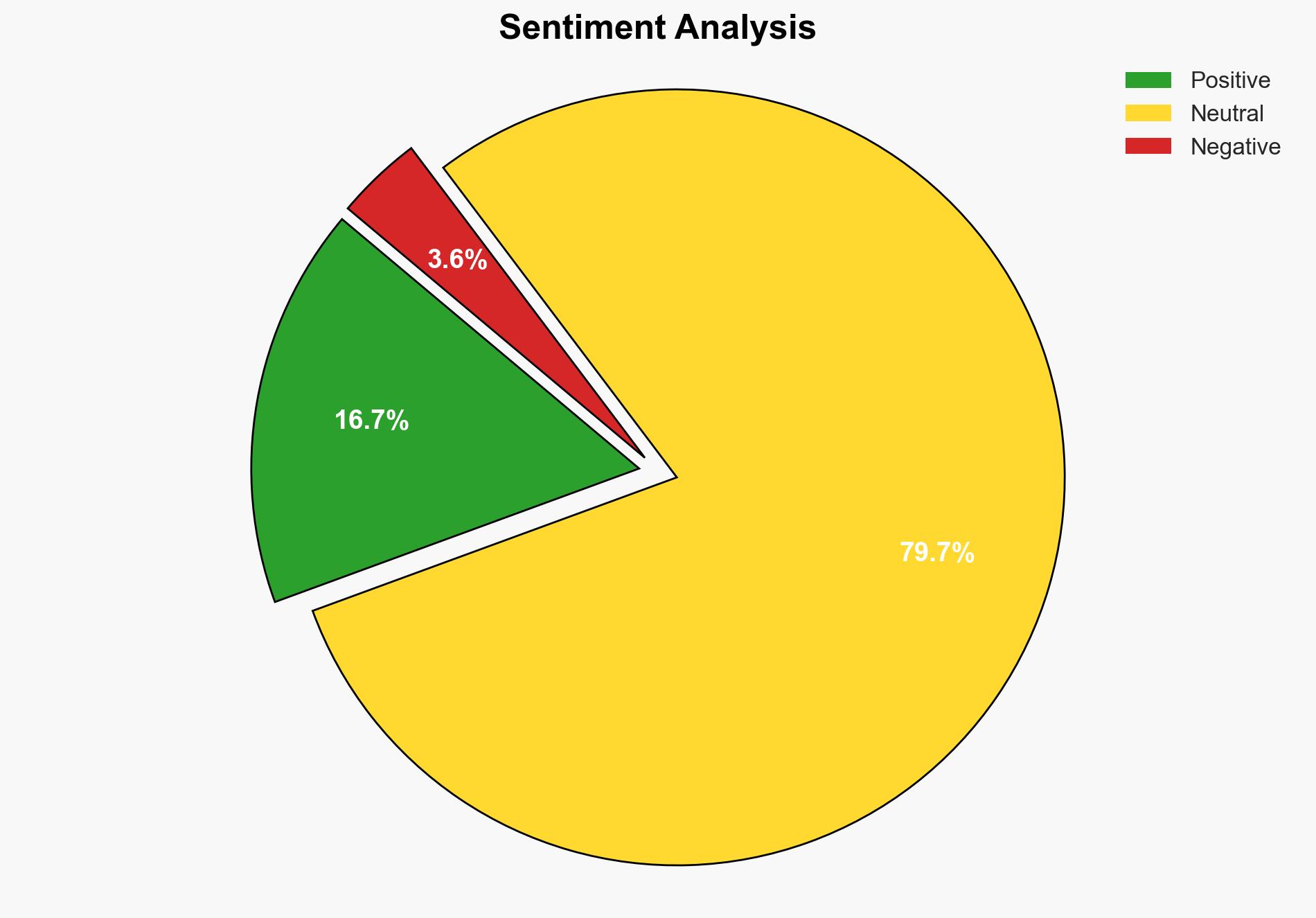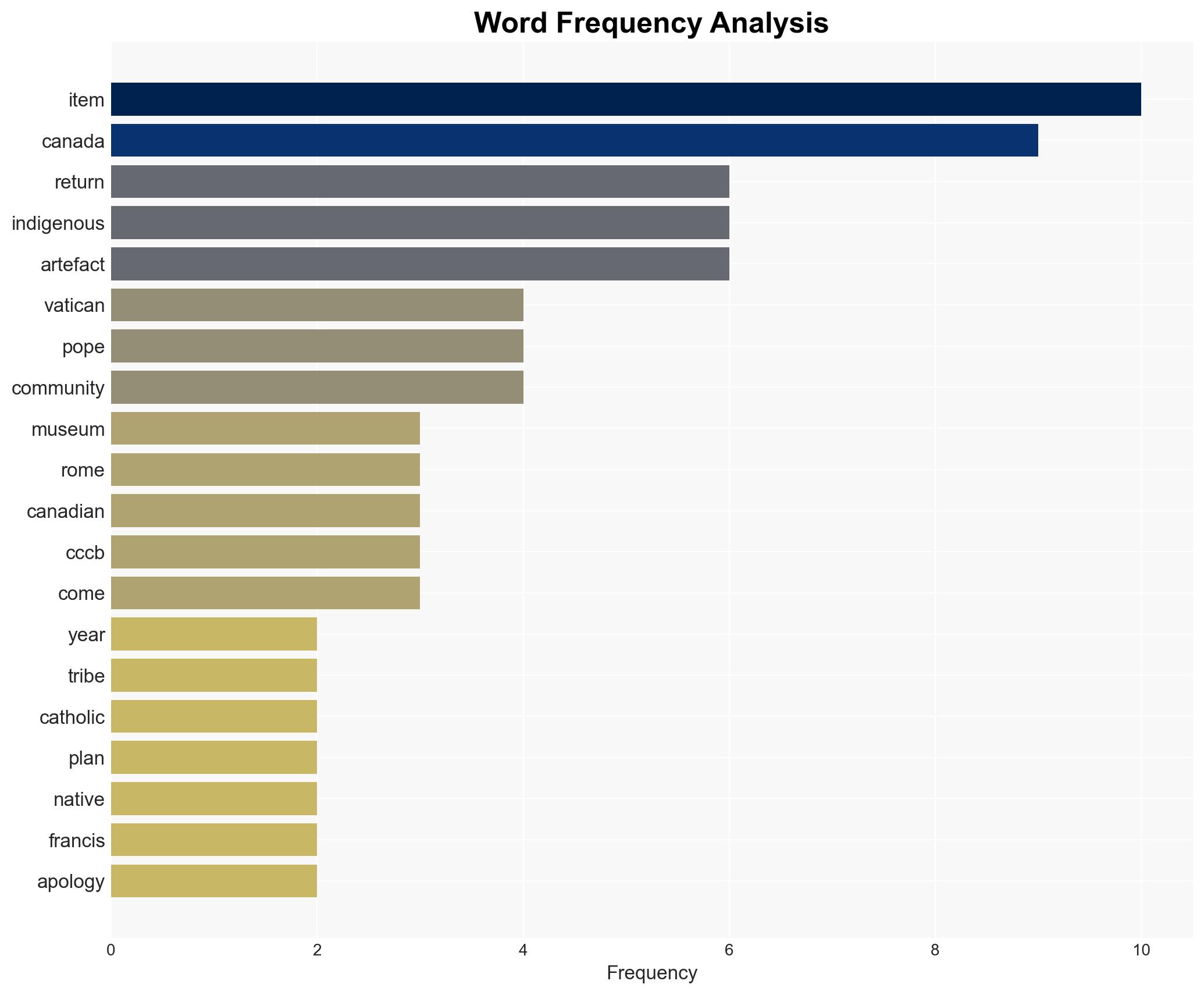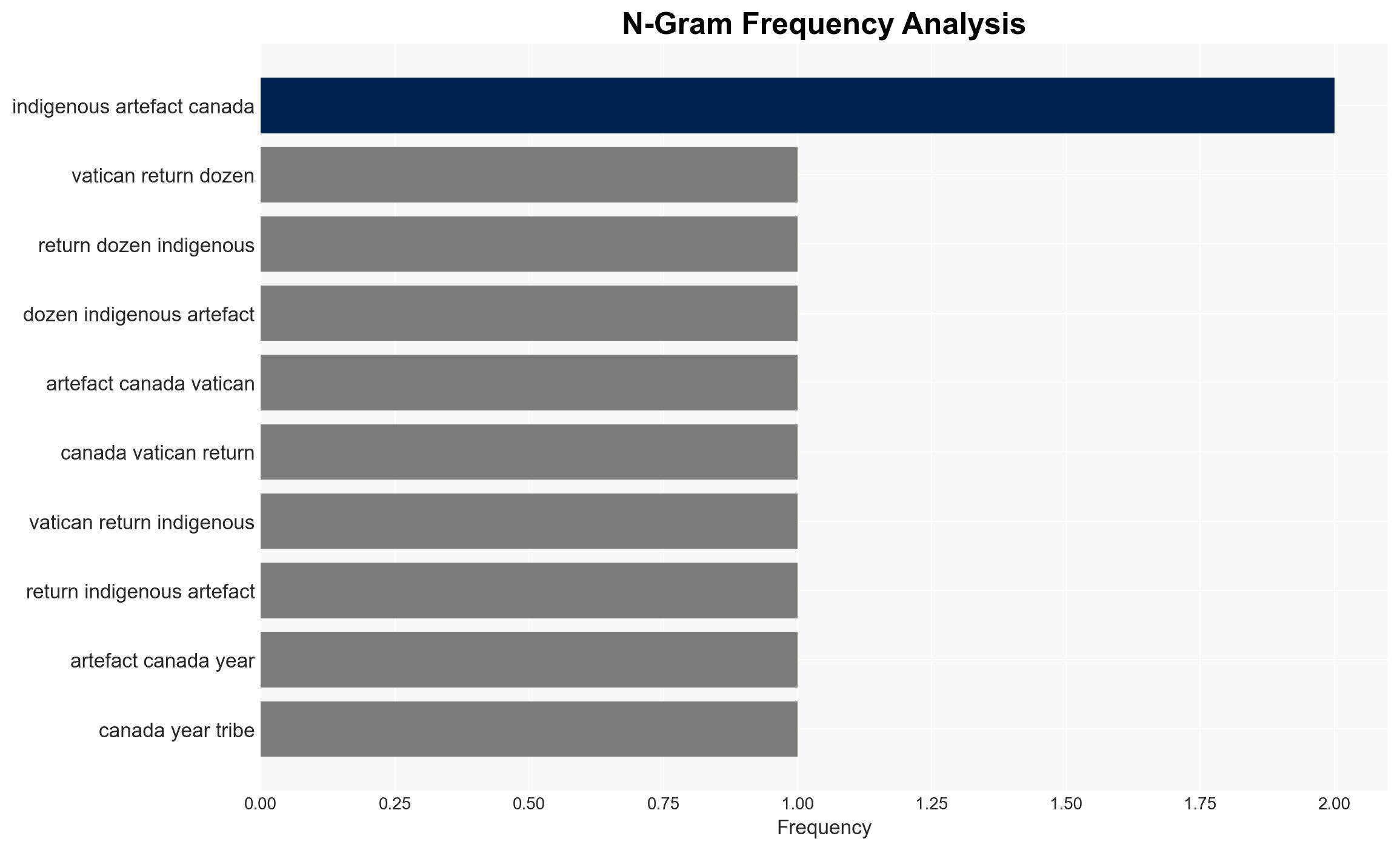Vatican returns dozens of indigenous artefacts to Canada – BBC News
Published on: 2025-11-15
AI-powered OSINT brief from verified open sources. Automated NLP signal extraction with human verification. See our Methodology and Why WorldWideWatchers.
Intelligence Report:
1. BLUF (Bottom Line Up Front)
The Vatican’s return of indigenous artifacts to Canada is a significant gesture towards reconciliation and cultural restoration. The most supported hypothesis is that this action is primarily a diplomatic effort to improve relations with indigenous communities and address historical grievances. Confidence Level: Moderate. Recommended action includes monitoring the response from indigenous communities and assessing the impact on Vatican-Canada relations.
2. Competing Hypotheses
Hypothesis 1: The Vatican’s return of artifacts is a genuine effort to reconcile with indigenous communities and address historical wrongs, particularly in light of Pope Francis’s apology for the Church’s role in the residential school system.
Hypothesis 2: The return of artifacts is a strategic move by the Vatican to improve its global image and mitigate criticism regarding its historical actions, rather than a purely altruistic gesture.
Hypothesis 1 is more likely given the context of recent apologies and the Vatican’s ongoing efforts to engage in dialogue with indigenous communities. However, the timing and public nature of the return suggest elements of Hypothesis 2 may also be at play.
3. Key Assumptions and Red Flags
Assumptions: It is assumed that the Vatican’s actions are motivated by a genuine desire for reconciliation. It is also assumed that the indigenous communities will view the return of artifacts positively.
Red Flags: The potential for misinterpretation of the Vatican’s motives by indigenous communities or critics. The possibility that the return of artifacts may not fully address broader grievances related to historical injustices.
4. Implications and Strategic Risks
The return of artifacts could strengthen Vatican-Canada relations and enhance the Vatican’s global reputation. However, failure to adequately address broader historical grievances could lead to criticism and potential backlash from indigenous communities. There is also a risk of setting a precedent for other nations or groups to demand similar actions from the Vatican or other institutions.
5. Recommendations and Outlook
- Monitor indigenous community responses to gauge the effectiveness of the Vatican’s actions in fostering reconciliation.
- Encourage continued dialogue between the Vatican and indigenous groups to address broader historical grievances.
- Best-case scenario: The return of artifacts leads to improved relations and further cooperative initiatives between the Vatican and indigenous communities.
- Worst-case scenario: The return is perceived as insufficient or insincere, leading to increased tensions and criticism.
- Most-likely scenario: The return is a positive step that contributes to ongoing reconciliation efforts, but further actions are required to fully address historical issues.
6. Key Individuals and Entities
Pope Francis, Canadian Conference of Catholic Bishops (CCCB), Canadian Foreign Minister, Indigenous community leaders.
7. Thematic Tags
National Security Threats, Cultural Reconciliation, Vatican Diplomacy, Indigenous Rights
Structured Analytic Techniques Applied
- Cognitive Bias Stress Test: Expose and correct potential biases in assessments through red-teaming and structured challenge.
- Bayesian Scenario Modeling: Use probabilistic forecasting for conflict trajectories or escalation likelihood.
- Network Influence Mapping: Map relationships between state and non-state actors for impact estimation.
Explore more:
National Security Threats Briefs ·
Daily Summary ·
Support us
·





